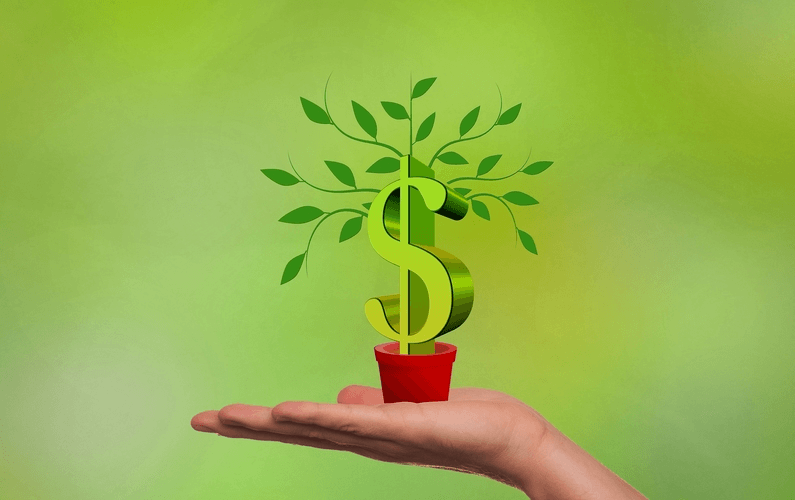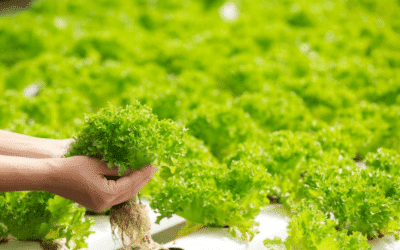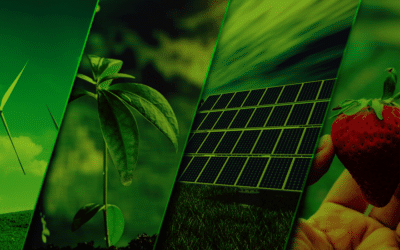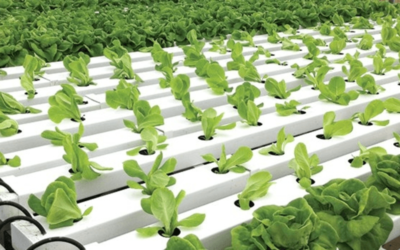Is the only thing holding you back from investing in a green home the fear that you simply can’t afford it? It’s a common misconception that living off the grid is only possible for the rich. While other’s think that converting their existing home will result in over-capitalization. By the end of this article you’ll come to realise that green homes are not just affordable, but actually add more value to your biggest investment.
Starting from scratch
If you’re in the market for a new home, it makes sense to look for one that already has many green features. Although there are not many of these homes available yet, these homes boast several innovative features that are not only eco-friendly, but contribute significant savings to the running of your household.
Knowing what to look for in a green home is the first step to evaluating whether it will be a good investment. Here are some pointers that you can use:
- It makes the best use of the location: An eco-friendly home should work with the environment to achieve maximum efficiency. If it’s correctly orientated, a green home can use natural sunlight to ensure that it’s easier to heat in winter, and just as easy to cool in summer. Taking advantage of natural sunlight and shadow means you spend less money keeping your living space at a comfortable temperature throughout the year.
- It is properly insulated:Most regular homes aren’t well insulated at all. This means that any money you spend trying to make your home comfortable just goes to waste. A green home is not just well-insulated; it also makes use of eco-friendly materials to ensure comfort and sustainability. The floors, walls and roof of your green home should all be insulated.
- It uses efficient heating and cooling systems:Underfloor heating and cooling may sound like an expensive luxury, but in a green home it provides a more efficient method of keeping your home at the right temperature. Use the innovative hydronics heating and cooling system to achieve this. Pipes laid throughout the house enables hot and cold water to be pumped under the flooring. This is far more efficient and affordable than using heaters in winter or air conditioners in summer to adjust the temperature of your interior spaces.
- It relies on solar energy:This may seem to be the most obvious feature of green homes. At the very least, a solar water heater provides free energy for heating the water that you use on a daily basis. If you instead add different panels and batteries, you can generate enough power to run your entire home without relying only on the grid.
- It’s water-wise:Clean water is rapidly becoming one of the most precious resources on the planet. And as time goes on, accessing water will become even more expensive. That’s why most green homes make use of water tanks to collect rainwater which can be used for everything from washing your car to flushing your toilet, and importantly to irrigate your garden. And the good news is that this doesn’t have to take the form of an unsightly tank in your garden. Instead, they are buried underground and fitted with energy efficient pumps to make the water available where you need it.
While these are just some of the basic features that any good green home should have, look out for those that offer little extras. Double-glazed windows, a garden with indigenous plants and bamboo flooring or counter tops all go a long way to making your home efficient and sustainable.
Counting the cost
Understanding the true cost of a green home requires you to do some serious calculations. While it’s true that you initial investment is higher than normal, you should factor in your future costs to see how much you’ll save in the long term.
To do this, you’ll need to calculate how much energy and water you currently consume and what it costs you every month. You can do this by monitoring your consumption and bills for a month or two. Then, you’ll need to estimate how much your expenses will increase as the cost of these resources continues to rise. Finally, you can offset this against the initial costs of buying a green home.
You’ll realise, as others have, that investing in a green home offers you substantial future savings. On average, you’ll find that it takes between 8 – 10 years to recoup your green investment. And, you’ll have many years of future savings to look forward to. As the costs of electricity rises, you’ll actually end up saving even more with each passing year.
Buying a green home is a serious commitment though. To really appreciate the savings you can enjoy, you’ll remain in your home longer—and when moving, you’ll move to another eco-friendly home of course.
The good news doesn’t end there. Should you ever sell your green home, you’ll find that you can command a higher price for your property. And because green homes require less maintenance, you won’t have to spend a lot of money preparing your home for resale.
Retrofitting your existing home
Even if you’re not in a position to buy a ready-fitted green home, there are several things you can do to make your existing home more energy-efficient. Retro-fitting an existing home with green features is often considered expensive. But once again, you need to take into account your future savings to determine how cost-effective these measures are.
Aside from cost, most people are unsure of where to start greening an existing home. However, it’s always a good idea to start small and build-up to bigger projects. Very often, some serious research is required to determine just what the final cost and savings may be. If you need help, consult with experts who will be able to give you the right advice. Some of these projects require specific knowledge and tools, so don’t be tempted to take the DIY route if you don’t have the necessary skills.
Start small
There’s more to owning a green home than just enjoying the cost savings. It requires a mind-shift to start living in a different way. So if you think that you’re ready to embrace a new way of living, try out some small projects before committing to the bigger ones.
- Be aware of how much energy you use: Simply turning off the lights as you leave a room is a good habit to develop. If you do eventually install photo-voltaic solar panels to power your home, you’ll need to be conscious of your energy consumption. That way, if you do make the switch to solar power, you’ll use it wisely and not waste it.
- Use energy efficient products: Light bulbs, dishwashers and fridges all consume electricity. If you ever get to the point where you generate your own electricity, you’ll want to make sure your household appliances are energy efficient.
- Monitor your water usage: Cutting down on your time in the shower can be difficult. But ultimately, it will help you save money on both your water and energy consumption. If you’re going to install a solar water heater, you’ll appreciate just what it takes to have a hot shower in the morning.
- Get water-wise: It’s so easy to just turn on a tap and have access to fresh water that we tend to take it for granted. So start thinking about all the water you use during the day and what steps you can take to cut down. Plant indigenous in your garden, pop a brick in your toilet and re-use your grey water for washing your car.
Once you’re aware of your consumption habits, it will become easier for you to see the value in investing in the bigger projects. When you’re ready to make the change, here are some of the ways you can retro-fit your home:
- Solar water heaters: Installing a solar water heater can knock a good 30% off your monthly electricity bill. When measured against the installation costs, it means you can re-coup your investment within 4 – 5 years. Most solar water heaters come with a five year guarantee and last between 15 – 20 years. As they don’t require much maintenance, this makes them one of the easiest green features you can use in an existing home.
- Insulation:An energy-efficient home is one that is well insulated. With existing homes it may be difficult or costly to add more insulation, but the investment is well worth it. Often your roof is the best place to start as it’s quite easy to add a layer of insulation here. But be sure to use environmentally-friendly material for this project. You can also check your windows and doors for air leaks and use insulating strips or caulk to seal them from draughts.
- Rainwater harvesting tanks:This very much depends on the space you have available on your property. However, there are plenty of options available on the market; your bound to find one that suits your requirements. These tanks can also be buried underground so they won’t detract from the appearance of your property. And they can be fitted to work with the existing municipal supply so you’ll never have to worry that you won’t have access to water when you need it.
- Photo-voltaic solar panels:Living off the grid is possible, but for existing homes it requires a significant investment. However, you can easily start with some panels and add to them as you save on your monthly bills. As with the rainwater tanks, you can supplement your solar panel with the municipal electricity supply.
Once you start investigating the options available for retro-fitting an existing home, you’ll see just how easy and affordable it can be. Not only will you enjoy considerable savings on your monthly running costs, you’ll also be adding significant value to your home. And should you ever want to sell your home, you’ll be able to command a higher price.
What’s more affordable?
The answer to this question will depend on your current situation. If you’re considering buying a new home, it would make sense to find one that has all the green features you want. And while this may mean that you spend more money initially, you will end up saving immediately and continuously.
If moving is not an option, then this article should prove to you that it’s still possible to go green without spending a fortune. Researching various green features will help you make a decision on where to start. And you’ll find that once you have implemented some of these suggestions, you’ll save money which you can put towards your next project.
It’s safe to say that being environmentally conscious isn’t just for the rich. With proper planning and dedication, anyone can change their home into green home. Are you ready to make the change?








